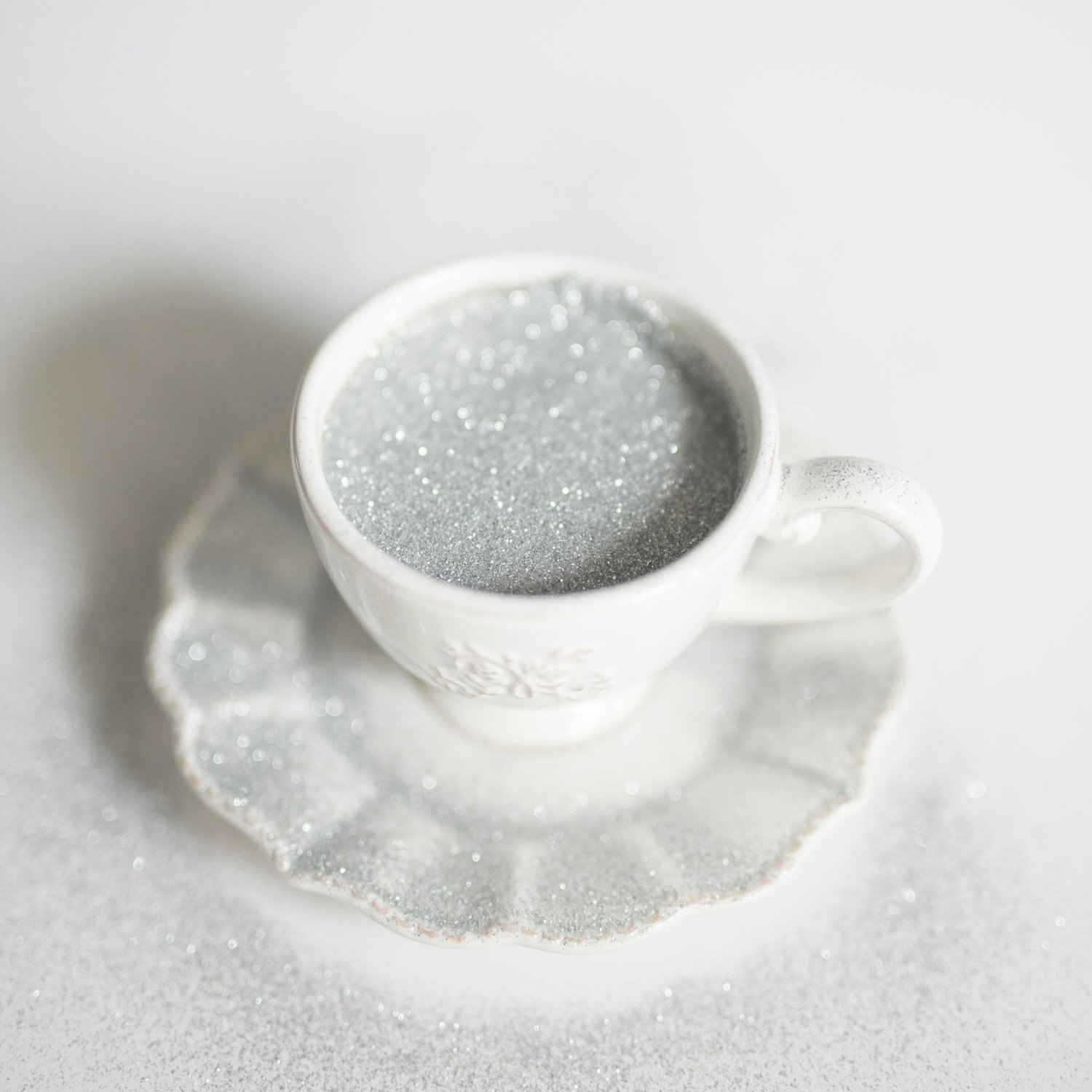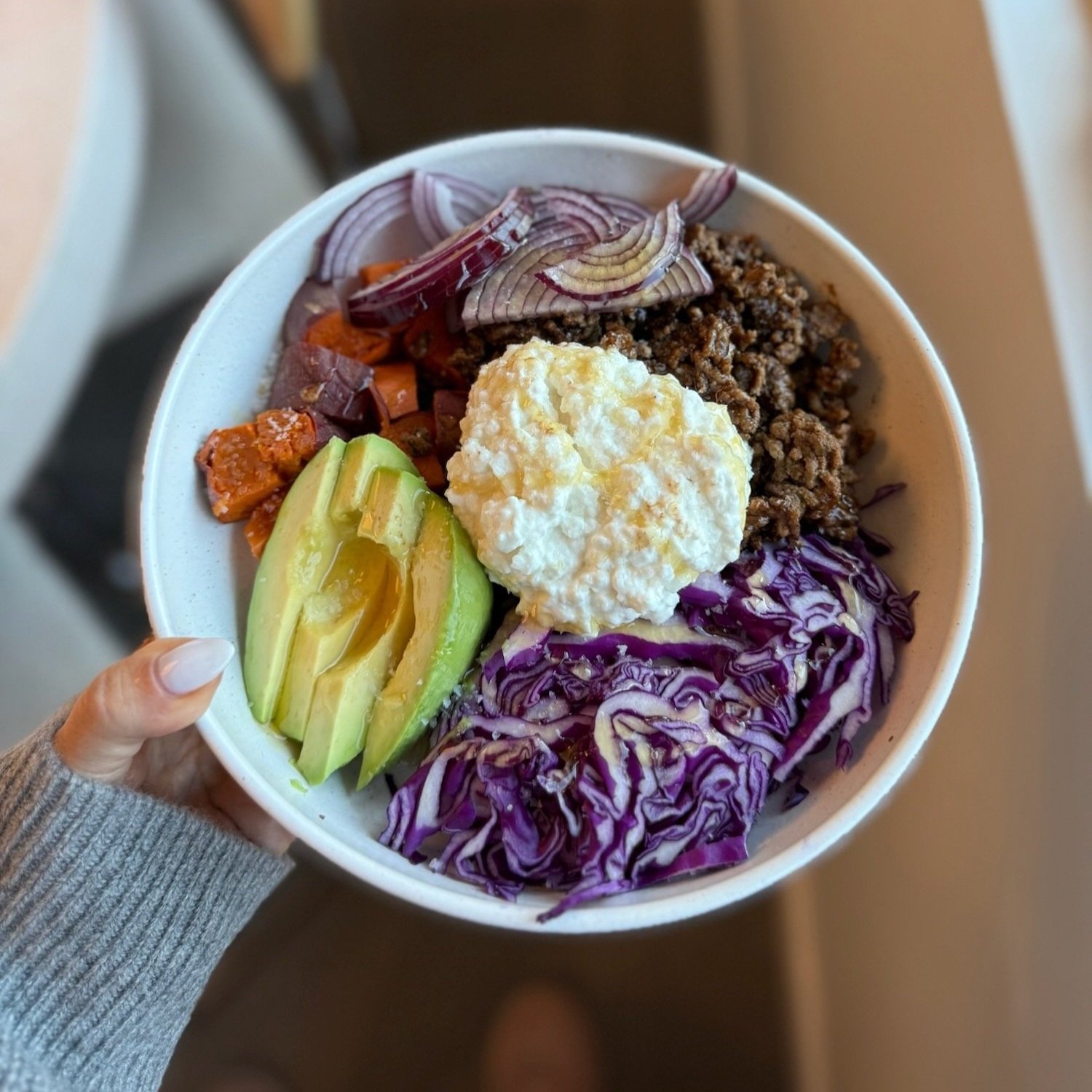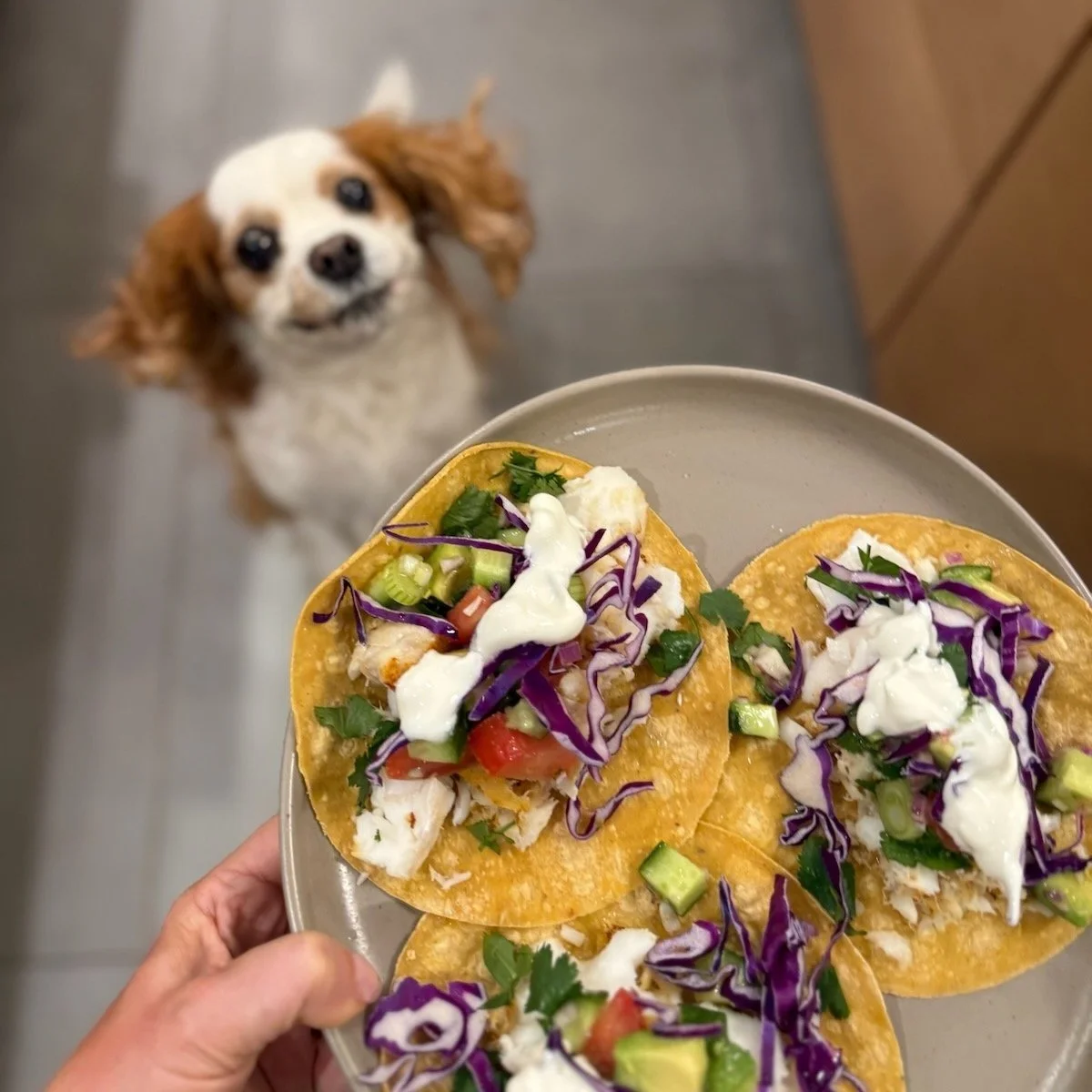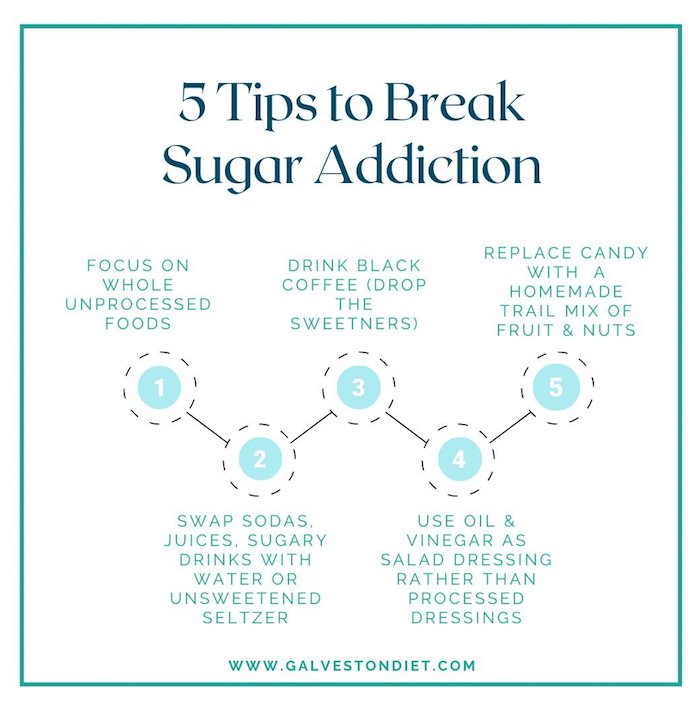If You Only Do One Thing For Your Health As A Woman Over 40, Make It This
by The Candidly Team
Doesn’t it feel like you turned 40, and suddenly everything…hurts?
We wake up in agony from sleeping on a slightly-too-soft pillow for even one night. Our once-straight hair is now inexplicably curling in random patches. We have 3 sips of champagne and have to leave all the curtains closed the next day. We glance at an Oreo and gain four pounds.
While some of these are “easy” fixes, like finally upgrading to REAL pillow instead of something cheap that we fished out of a bin at Bed, Bath, and Beyond 12 years ago, the hardest to change is our diets. We have a vague idea that we should be consuming more of certain nutrients as we get older— don’t women need calcium and iron? But trying to parse what we should be consuming more of (and less of) is such a murky rabbit hole, we could spend our remaining years on this planet trying to figure it out.
So we enlisted the help of Dr. Mary Claire Haver, creator of The Pause Life and author of the recently released book of the same name. Dr. Haver is an OBGYN and expert in women’s nutrition, especially for women who are postpartum, 40+, or entering perimenopause or menopause.
And she told us there is ONE thing all women over 40 should avoid, plus gave us 5 more ironclad ideas about health if you’re 40+ and feel tired and sluggish and bloated all the time. Aka all of us. Let’s go.
This is the most important thing to avoid after 40.
We’ll just get right to it. Dr. Haver’s biggest piece of advice is to “limit added sugars to less than 20g/day.”
We’ve written extensively about how sugar is poison, and that the American Heart Association recommends women consume no more than 25 grams of sugar a day.
But Dr. Haver specifically believes in cutting down on “added” sugars, which are “sugars added during the processing of foods (such as sucrose or dextrose), foods packaged as sweeteners (such as table sugar), sugars from syrups and honey, and sugars from concentrated fruit or vegetable juices.”
And no, that doesn’t include “naturally occurring sugars found in milk, fruits, and vegetables,” says Dr. Haver.
Why? Well, it’s simple. “Excessive added sugars have been linked to heart disease, cancer, acne, type 2 diabetes, depression, and skin aging,” Dr. Haver explains. And this is particularly true for women over 40. Added sugar increases visceral belly fat, and hormones during menopause also increase our visceral belly fat, both of which increase our chance of gaining weight. Sugar also speeds up cellular aging, which no one wants.
And as we enter perimenopause and menopause, limiting our sugar intake can actually help mitigate some of the less-desirable side-effects like insomnia, hot flashes, depression, and weight gain.
Need some easy ways to deal with your sugar habit? Here are 7 low-key ways to replace it, and a few tips from Dr. Haver’s blog on breaking up with sugar:
Eat whole, unprocessed foods instead of foods that are packaged and processed.
Drink seltzer or sparkling water instead of sodas (additionally, we recommend throwing in fresh fruit or cukes for some pleasing “spa water”).
Buy plain yogurt, instead of flavored yogurt, and add fruit and berries for flavor and sweetness.
Skip the bottled salad dressings, and make your own at home using oil and vinegar.
Skip the pre-packaged cereals (which are usually loaded with sugar) for plain yogurt with berries, homemade scrambles and omelettes, homemade overnight oats or chia seed pudding.
And here are 5 more concrete tips for optimizing your diet, getting more targeted nutrition after 40, and immediately feeling and looked better:
1. Eat waaaaaay more fiber.
This is another tip we wholeheartedly endorse, and have written about many times. Dr. Haver recommends we “have at least 25g of fiber in your diet per day.”
According to Dr. Haver, “soluble fiber…might assist in lowering your risk of heart disease. A high-fiber meal slows food digestion in the intestines, which may help reduce blood sugar levels from increasing too quickly. Plus, a high-fiber diet may also help you feel fuller for longer, reducing overeating and hunger between meals.”
And let’s not forget that a fiber-rich diet keeps our gut happy, making us more regular, preventing constipation, and warding off colorectal cancers.
But it must be said that getting 25 grams of fiber per day is…hard. Most of us need to mix some sort of fiber powder into our daily smoothies to get there. Which is why we wrote an opus on that HERE, but here are just a few fairly easy things you can do right now to significantly increase your daily fiber intake:
Eat raspberries: Not only are they delicious, but they have 8 grams of fiber/cup. Throw them in your morning yogurt or overnight oats. Snack on them for dessert. Just pop them in your mouth throughout the day.
Try steamed lentils from your local Trader Joe’s: Lentils are a whopping 16 grams of fiber per cup! But if rinsing and boiling and simmering lentils just isn’t a process you have the time of patience for, pick up these steamed lentils from your local Trader Joe’s. They cost $3, require no prep, and are easy to throw in soups and salads (like THIS 5-minute Mediterranean mint feta salad). Also, there’s 30 grams of fiber per package.
Enjoy your avocado toast: Basic? Maybe. But avocados have 10 grams of fiber/cup. So next time your friend makes fun of you for ordering avocado toast at brunch again, tell them it’s “for health reasons.”
2. Eat waaaaaay more protein.
Usually, we associate protein-rich diets with bodybuilders and keto fanatics. But according to Dr. Haver, “studies have shown that people who eat at least 1 – 1.5 g of protein for every kg of lean body mass have less belly fat than people who eat less.” And as we know, belly fat is a big issue for us women over 40; it can increase our risk of diabetes, breast cancer, heart disease, and dementia. Fun!
To help ward off belly fat, Dr. Haver recommends a protein-rich diet, which means “increasing your intake of high protein foods such as whole eggs, fish, legumes, nuts, meat, and dairy products.” Some health experts recommend around 46 grams of protein for women per day.
Here are a few stupidly easy ways to get more protein in your diet throughout the day:
Hard boiled eggs: If you don’t feel like spending 10-20 minutes of your day boiling eggs, you can buy pre-made hard boiled eggs at grocery stores like Whole Foods, dust them with some Maldon salt, and snack on them for breakfast or throughout the day whenever you’re feeling peckish. They’re also a great hack for making deviled eggs. Did we mention they have 6 grams of protein/egg?
Greek yogurt: You know those little 6 gram packages of plain, Fage greek yogurt you can pick up at most grocery stores? Well, they have 18 grams of protein in them. Who knew? Add in your cup of raspberries for breakfast, and you’ve got your protein AND fiber sorted for the day. Could that be any easier?
Lentils: Here we are, preaching about lentils again. But in addition to fiber, they have about 18 grams of protein per cup. Um, are lentils magic?
3. Eat waaaaaay more Omega-3’s.
If you’ve ever numbly sauntered down the supplement aisle of your local health food store, you’ve probably come across hundreds of Omega-3 supplements, wondering if you need them.
Turns out, we do! “They play an important role in the construction of every cell wall you have. They also serve as an energy source and aid in the proper functioning of your heart, lungs, blood vessels, and immune system,” says Dr. Haver. Importantly, she also notes that “Omega-3 fatty acids may help protect against Alzheimer's disease and dementia, as well as having a beneficial effect on aging-related memory decline, according to some studies.”
Dr. Haver suggests that taking a daily fish oil supplement may be especially beneficial for “individuals with excessive triglyceride levels,” asthmatics, people with ADHD, and people with rheumatoid arthritis. People with depression may also benefit from an Omega-3 rich fish oil supplement, as “according to several studies, societies that consume meals high in omega-3 fatty acids have reduced depression rates.”
According to Dr. Haver, a good rule of thumb for people without a history of heart disease is to “consume at least two meals of fish each week (a total of 6-8 ounces). A variety of fish is recommended. Omega-3 fatty acids are abundant in cold-water wild fish such as mackerel, tuna, salmon, sardines, and herring,” she recommends. And while there isn’t really a daily “gram” goal that she strives for with Omega-3’s, she recommends and personally takes an Omega-3 supplement everyday.
Here are a few “hacks” we use to get more Omega-3’s:
Canned Salmon: Now you have an even better excuse to try out that viral salmon-rice recipe from Emily Mariko. But here’s our twist; use canned salmon and 3-minute rice from Trader Joe’s, and this whole meal becomes an easy lunch you can whip up in 5 minutes. Don’t be afraid of canned salmon—it’s actually really good for you, inexpensive, and low in mercury.
Flax and chia seeds: If you’re vegan or vegetarian, you don’t NEED to only eat fish for Omega-3’s. Flax and chia seeds are some of the best plant-sources of Omega-3’s. Toss them in your daily smoothie, overnight oats, morning yogurt, or make a flax-and-chia seed pudding. Flax seed oil has a high concentration of Omega-3’s, and is great for cooking or dressings and sauces.
Walnuts: Apologies to anyone with a nut allergy, but for the rest of us, walnuts are a great source of Omega-3’s, and such an easy food to snack on throughout the day. Throw them in your morning oatmeal, your lunch salad, or snack on them in the afternoon with some cheese and fruit.
4. Make absolutely sure you get enough Vitamin D.
Yes, we’re huge proponents of staying out of the sun and slathering on SPF for your skin health. But we also need Vitamin D, that thing that comes from the sun, to survive.
Vitamin D does a lot for us, including “the regulation of calcium and phosphorus intake and the facilitation of proper immune system function. Vitamin D is necessary for proper bone and tooth growth and development and enhanced resistance to some illnesses. Vitamin D has also been shown to fight disease, reduce depression, and aid in weight loss in overweight individuals,” says Dr. Haver.
Her recommended daily dose of Vitamin D is 600 IU or 15 micrograms (mcg) per day.
So how do we get it? Well, Dr. Haver says that “when your skin is physically exposed to sunshine, your body generates Vitamin D naturally. To guarantee appropriate amounts of the vitamin in your blood, you may also receive it through specific meals and supplements.”
Here are a few ways to get more Vitamin D:
Eat more fish: Salmon, tuna, and mackerel are all great sources of Vitamin D. And, as we already know, Omega-3’s. Two fish, one stone.
Egg yolks: Eggs, specifically the yolks, are a great source of Vitamin D. Remember those hard boiled eggs from earlier? Here’s another reason to try them, and a great excuse for eating deviled eggs on a regular basis.
Mushrooms: For our veggie/vegan friends out there, mushrooms are ALSO a great source of Vitamin D, and they’re low-key magical for your immune system. We have some suggestions for getting more mushrooms in your diet here.
5. Make absolutely sure you get enough Magnesium.
Ok, so most of us know we need to have protein and Vitamin D, but this is a much lesser-known one.
Magnesium is “a mineral found in soil, the sea, plants, and animals,” and it “plays a role in over 600 bodily responses,” Dr. Haver says. “Magnesium assists in the conversion of food into energy, assists in the synthesis of new proteins from amino acids, assists in the creation and repair of DNA and RNA, is a component of muscle contraction and relaxation, and finally, regulates neurotransmitters, which convey messages throughout your brain and neurological system.”
Dr. Haver recommends 320mg of magnesium per day. And here are a few ways to get it:
Dark chocolate: If you’re tired of reading about salmon and raspberries, here’s one that might excite you. Dark chocolate has 64 mg/oz, along with antioxidants, iron, and copper. Of course, eating too much of it may contradict Dr. Haver’s biggest point about less sugar, but they key here is moderation. And there are plenty of healthier, low-sugar dark chocolate bars (like this one) that might give you a little extra boost of magnesium from just a few bites.
Avocados: One avocado is 58 grams of magnesium. Once again, avocado toast is a NECESSITY.
Tofu: Good news for vegetarians/vegans— tofu is another great source of magnesium with 53mg per 3.5oz. If cooking tofu is still a bit intimidating, try marinating silken tofu with a soy sauce mixture and throwing on some scallions.
We’re older. Things are changing. But with some tweaks, we can feel and look better than we ever have in our lives. You in?















